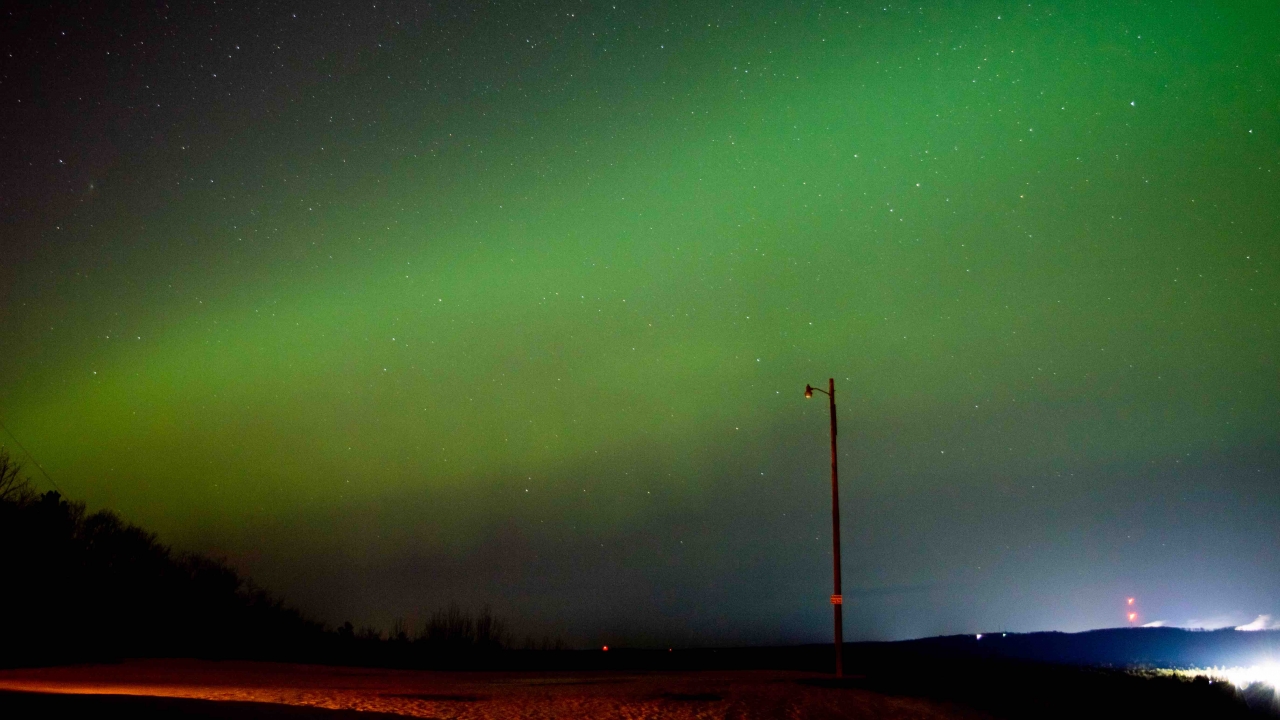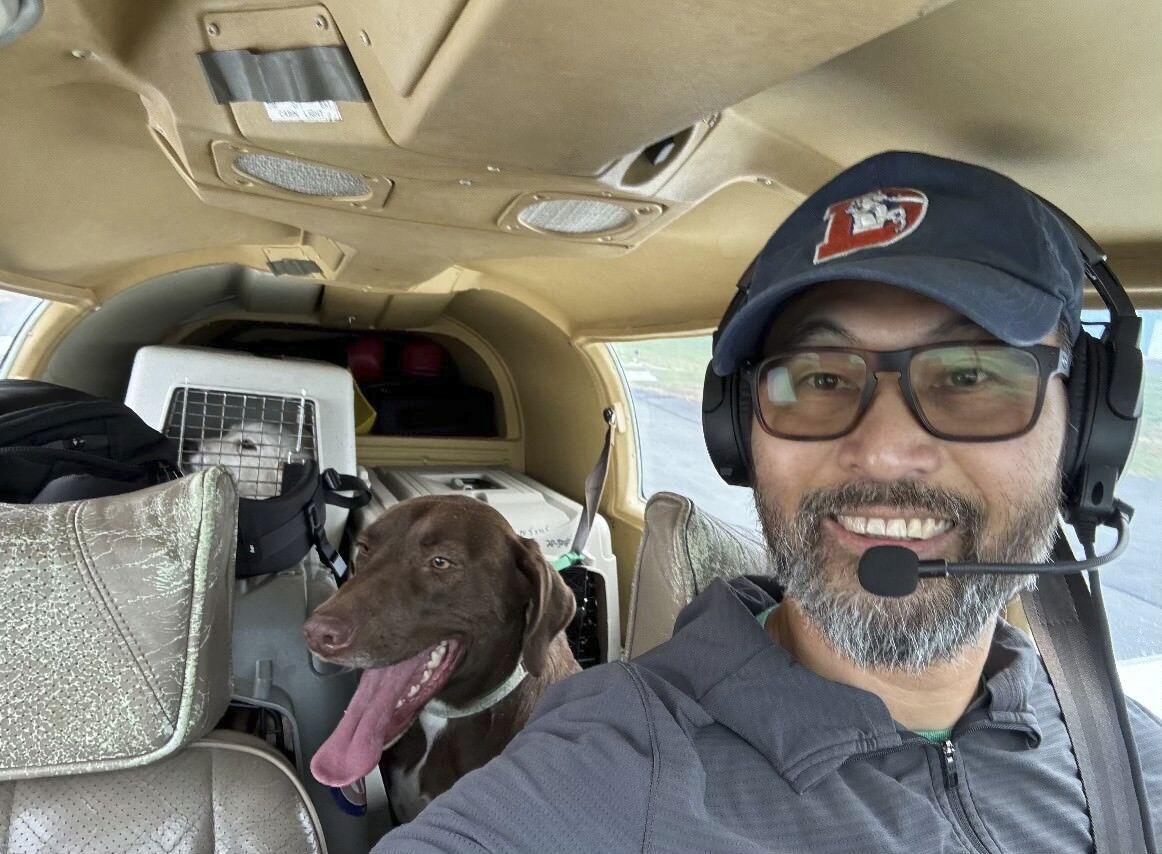The hunt begins in darkness. Les Giese and his son Thor make their way through a public forest in Annandale, New Jersey to a tree stand where they’ll wait for dawn and if they’re lucky — a deer. We settle in, 25 feet above the ground, watching the sun rise through the trees.
NEWSY'S SAM EATON: So what's the secret? You just. It's a matter of just waiting?
THOR GIESE: It's getting in between where they live and where they eat.
After about four hours and no deer, we call it a day. We meet again on the trail with Thor’s dad, Les, who also came up empty.
"They’re either running through the woods like a freight train or they’re like a ninja, you know," said Thor Giese.
Les Giese and his son aren’t hunting deer for themselves. They’ve already filled their freezer with enough venison for the year. Any deer they get from now on will instead feed families in need. It’s a program run by the New Jersey chapter of Hunters Helping the Hungry and Giese is the president.
"Right now, we're doing roughly 25,000 pounds of venison a year. Pretty close to 100,000 meals across the various food banks and pantries of New Jersey," said Les Giese.
In the two and a half decades since he founded the non-profit with friends, Giese says it’s become one of the top three game meat donation programs in the country. But he says it’s not just about providing food for the hungry. It’s also about saving these forests.
"A forest, a healthy forest like you see behind me here can handle 15 deer per square mile. This particular forest has probably got close to 150 deer, 10 times the carrying capacity of this forest," said Les Giese.
And with one in 10 U.S. households struggling to feed their families Giese says hunting more deer as a source of lean, healthy protein is a no brainer. It’s also become a lifeline for New Jersey food banks.
The problem of deer overpopulation in the forests of states like New Jersey is getting worse, but so is hunger. And it's places like this where the solutions to those two crises come together.
Shannon Williams is interim director of Norwescap Food Bankin Phillipsburg, New Jersey. She says the warehouse we visited distributes two million pounds of food a year to food banks, soup kitchens and homeless shelters all over the state.
"This is the Norwescap Food Bank. This is our warehouse," said Williams. "And this is some of the venison that we received through the processors and through hunters helping the hungry and that we distribute to our agencies."
Williams says the venison is in high demand, especially as the cost of providing meat to families has soared.
"With the pandemic and now with the food inflation and the costs rising on everything, it's been very difficult and the need has just continued to rise. And we're we're doing our best to to keep food coming in and out as quickly as we can," she continued.
From the rockies to New England and the deep South, white-tailed deer populations have exploded in recent decades. After being decimated by hunters in the 1930s, deer have made a stunning recovery, increasing one-thousand-fold in less than a hundred years.
But the process has imperiled the same ecosystems that have sustained their recovery.
Jay Kelly is a biologist at Raritan Valley Community College. He says more and more deer squeezing into smaller and more fragmented forests is sending the entire ecosystem into freefall.
"So this is a typical forest in central New Jersey. What you see here, you'll find pretty much throughout the region. And what's noteworthy is the absence of any living things in the understory."
"[At} about 15 [deer] per square mile regeneration starts to decline. The, you know, waist high seedlings will begin to disappear. And above 20 per square mile, everything begins to shut down in the forest with loss of bird populations, all components of the vegetative understory, arthropod, amphibian densities and so forth," said Kelly.
In New Jersey deer densities usually exceed a hundred per square mile, creating what Kelly calls a zombie forest. Not only is the biodiversity lost, the only thing replacing the older trees as they die are invasive species like this Japanese angelica tree.
"The canopy of leaves will come out of these angelica trees are these enormous compound leaves that have thorns on the stems of the leaf thorns and the leaf leaves and leaflets themselves. It's just armed with all sorts of defenses on every inch of the tree. It's really incredible," said Kelly.
The good news is that once deer populations are reduced, the forest recovers.
Duke Farms Nature Preserve in Hillsborough, New Jersey is a stark example of how quickly that change can happen.
"So what you see here is about 15 to 17 years worth of regeneration since deer were initially managed aggressively at the site," said Kelly
Kelly says deer densities here reached 250 per square mile. After installing deer fencing and maintaining deer populations at much lower densities, the invasive species disappeared and the forest regenerated.
"The trees that you see growing up, these are ash trees. There are hickory trees and oaks all growing in this understory," said Kelly.
Kelly says short of reintroducing predators like wolves to these forests, hunting is the most effective means of reducing deer populations. But the number of hunters in the U.S. has been in steady decline since its peak in the 1980s.
And in order to process the meat for food banks you need USDA certified butchers like J.B. Person’s family-owned Game Butchers in Lebanon, New Jersey.
Person says his father started the business back in the 1960s.
"It's a pretty unique business — unfortunately. It's a dying trade," said Person.
With grants now covering the cost of butchering for food banks, Person hopes more butchers will come online to help the program expand. In the meantime, he struggles to keep up.
"And it doesn't last long. I mean, they come, they come pick up the meat — it sits in in their freezers for only maybe a week or two. And it's distributed and it's gone," said Person.
That venison ends up at food banks. Flemington Area Food Pantry Executive Director Jeannine Gorman says they’re busier now than they’ve ever been.
"We see anywhere from 50 to 70 clients, which pretty much means since COVID. And now in the height of financial inflation and everything else, we can see on average a person every three minutes," said Gorman.
Cars line up to load pre-ordered food items. This is what the food insecurity crisis in America looks like. Bob Flanagan is one of them.
"I'm self-employed, I'm a contractor. The bottom fell out after I got COVID because I can't work. I couldn't work," said Flanagan.
Flanagan also used to hunt. But since COVID wrecked his lungs, forcing him to carry an oxygen tank with him at all times, he’s had to rely on the donations.
"There's the venison. This is hamburger. I'll mix it up with the tomato sauce and make a spaghetti," said Flanagan.
It’s a rare thing for one crisis to help solve another. But Les Giese hopes the partnership he’s created between the state, the hunters, the butchers and the food banks offers a glimmer of hope.
"We're trying to make the herd healthier. We're trying to make the forest healthier. We're trying to make some of the less fortunate people have some protein, low fat meat. Win win all the way around," said Les Giese.
That night Giese, his family and friends gather to grill venison backstrap and share a meal.
He says he grew up on a dairy farm in Illinois where sharing with neighbors was a way of life. And as the forests suffer, and more of his neighbors struggle to feed their families, Giese hopes that spirit of sharing will catch on.










